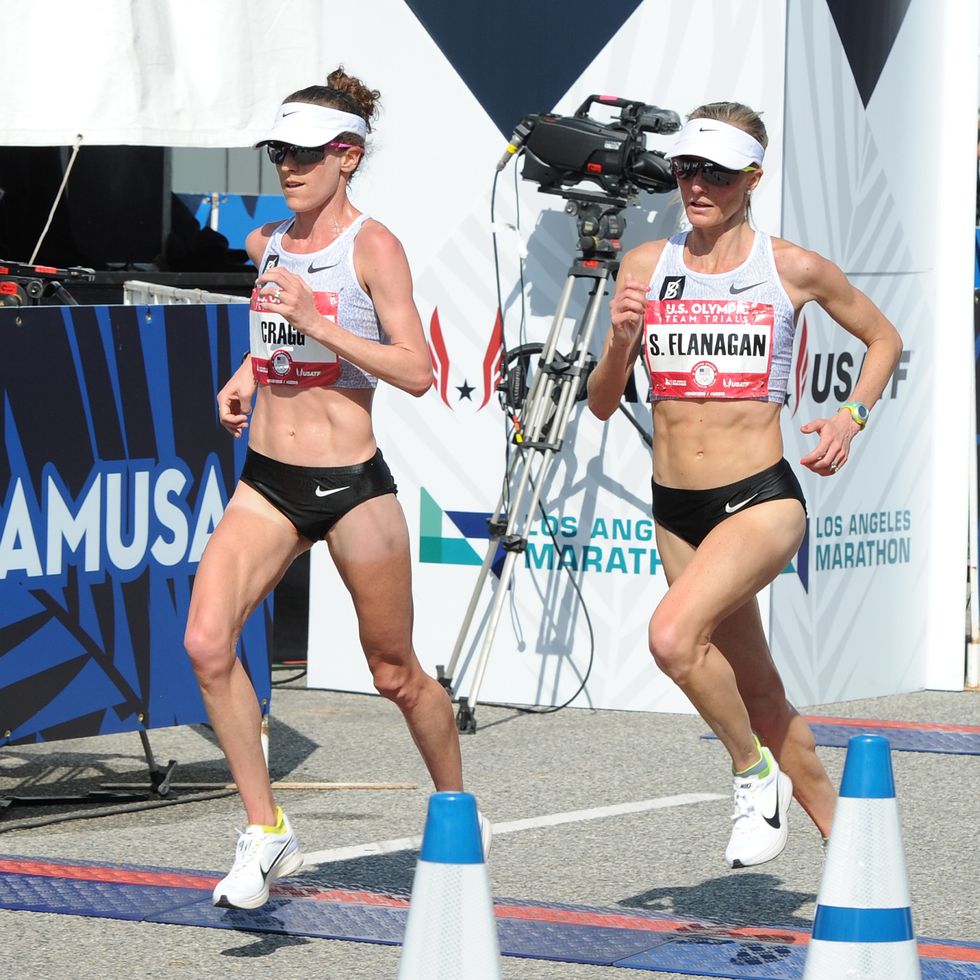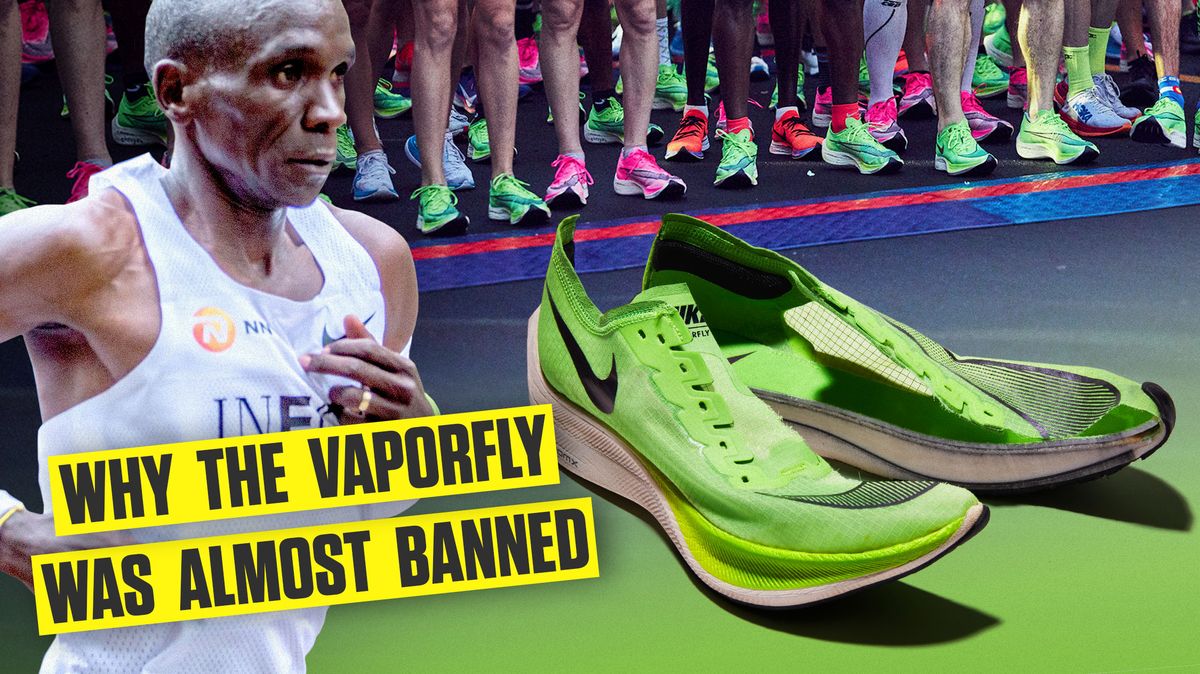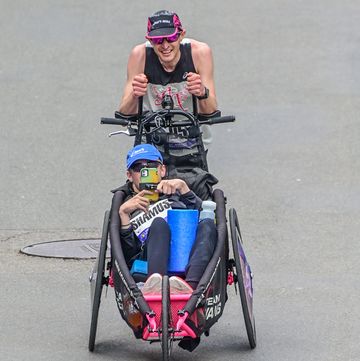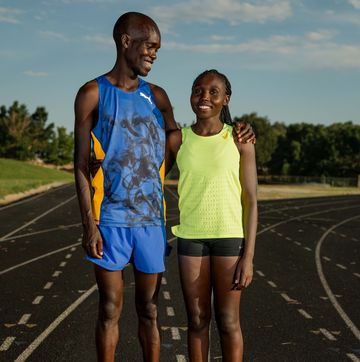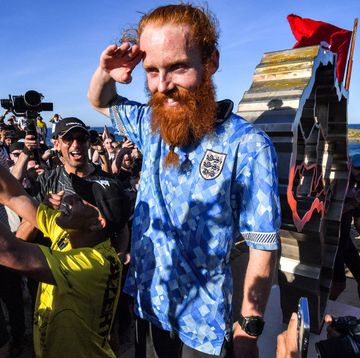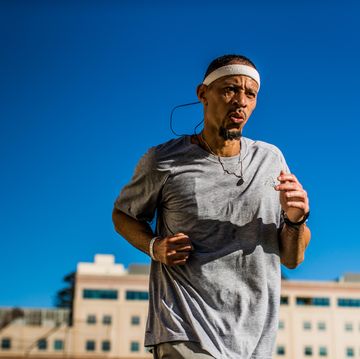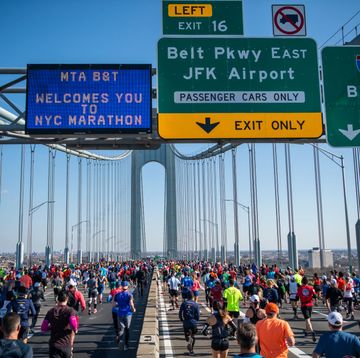On Friday World Athletics, the governing body of track and field, announced major changes to its rules on footwear. The new regulations impose an immediate ban on any shoe with a sole thicker than 40 millimeters (mm) or shoes that contains more than one plate.
World Athletics also announced that from April 30 of this year, any shoe used in competition must have been available for purchase on the retail market for a period of four months, effectively banning the use of prototypes in competition.
The new ruling means the Nike Alphafly, a prototype worn by Eliud Kipchoge during his sub-two-hour marathon in Vienna last year, will almost certainly not be allowed among athletes competing for prizes unless it is released with a reduced midsole. The shoe is due for release in the coming months and had recently been distributed by Nike to several of its sponsored athletes.
The previous version of Nike’s Vaporfly series, the Next%, will remain eligible at all levels of competition as the stack height of its heel is approximately 40mm, with a 32mm forefoot stack height and an average of 36mm. While Nike has not announced details of the Alphafly’s composition, industry experts estimate that its heel stack height is above 40mm that it may even contain three plates. (Runner’s World has not received a pair for testing in our labs to confirm.) At the time of publication, Nike had not responded to questions about the stack height or number of plates in the Alphafly.
The regulations are likely to have a drastic impact on the future of shoe technology, which has progressed rapidly in recent years because of the development of shoes containing carbon fiber plates in their midsole and revolutionary new foams.
“It is not our job to regulate the entire sports shoe market, but it is our duty to preserve the integrity of elite competition by ensuring that the shoes worn by elite athletes in competition do not offer any unfair assistance or advantage,” said Sebastian Coe, World Athletics president. “As we enter the Olympic year, we don’t believe we can rule out shoes that have been generally available for a considerable period of time, but we can draw a line by prohibiting the use of shoes that go further than what is currently on the market while we investigate further.”
World Athletics also announced that spiked shoes must not contain more than one plate embedded in the sole, which can’t be thicker than 30mm. Further research will be carried out to examine the impact of new technology and a new working group will be formed to assess new shoes that enter the market.
Why have these rules been introduced?
While the regulations don’t mention the Nike Vaporfly, it’s almost certain they are a response to the shoe’s game-changing effect on distance-running. Ever since prototypes of the shoe were worn by Nike athletes as far back as 2016, it has sparked heated debate.
At the last U.S. Olympic Marathon Trials, Kara Goucher, a former Nike athlete, finished fourth behind Amy Cragg, Desiree Linden and Shalane Flanagan, a race in which Cragg and Flanagan wore early prototypes of the Vaporfly. “I do feel like it wasn’t a level playing field,” Goucher, who ran in Skechers shoes, for that race, recently told Forbes. “I felt like something I had worked so hard for had been stolen from me. I could handle not being good enough to make our team, but learning that a propulsion device in a shoe might have kept me out was just devastating.”
In recent years, World Athletics has come under increasing pressure to take action after claims that the Vaporfly violated its footwear rules, which stated shoes must not “be constructed so as to give athletes any unfair assistance or advantage” and must be “reasonably available to all.”
Although the Vaporfly went on sale in 2017, multiple medalists in the Rio Olympic marathon were said to have worn a prototype of the shoe in August 2016, which appeared to violate the availability rule. However, because the definition of the rule was so vague, it was never strictly enforced.
As a result, prototypes have long been worn at the highest level—and not just by those running for Nike. During her victory at the 2018 Boston Marathon, Desiree Linden wore an early prototype of the Brooks Hyperion Elite, a shoe that contains a carbon fiber plate and is set for release on February 27, two days before the U.S. Olympic Marathon Trials.
Why limit midsole thickness?
One of the first to propose this as a fair way to regulate shoe technology was Geoffrey Burns, a biomechanist at the University of Michigan and former Altra-sponsored runner who, along with his colleague Nicolas Tam, suggested in the British Journal of Sports Medicine last year that the stack height of a shoe’s heel should be limited to 31mm—the height Nike initially listed for the Vaporfly, though tests later showed it to be 5-6mm thicker.
He believes such a regulation removes the ability of brands to produce shoes containing multiple plates, technology which could distort the record books and effectively see athletes running on springs.
“The motivation was to write some sort of very simple regulation that’s relatively future-proof,” Burns told Runner’s World. “A very simple way of doing that is to limit the height. Operationally, it’s super-easy to enforce. With height restrictions, the more you limit that [midsole] real estate, the more other things you put in there don’t matter or can’t make a significant difference.
“If you have a reasonable height restriction, you couldn’t advantageously fit in two plates. The benefit of a plate is only afforded by a thicker and thicker shoe.”
World Athletics had long faced criticism for not taking action to halt the rapid technological advancements, but last year it commissioned a working group to consider the issues in shoe technology. The group included two former athletes alongside experts in science, ethics, footwear, biomechanics and law. It spent many months discussing its options and reported back with its recommendation earlier this month to the World Athletics’ Council.
Is the Vaporfly really that effective?
Yes. Various studies have found the shoe improves running economy by 4-5%, depending on the model, which likely translates to an improvement in race times of between one and two minutes for elite marathoners. A source who tested a prototype of the Alphafly in recent months told Runner’s World it is substantially more efficient than the Next%, with a second source stating it was “unbelievable” and like running “on springs.”
The Vaporfly series has changed the footwear game through a combination of factors: a carbon fiber plate that runs the length of the midsole; Pebax foam (what Nike calls ZoomX) that is extremely light, soft, and ultra-responsive; and a super-thick midsole that effectively lengthens a runner’s leg and allows the plate to work at its optimal angle.
“That ultra-light foam shifted the dial on what's the optimal amount of foam to put on your foot,” Burns said. “It costs your body less to carry because it’s lighter and returns more energy. Beyond just restoring and returning energy better than other shoes, it’s the same weight as other shoes, but now you have a centimeter and a half longer legs. That gives you a mechanical advantage. ”
Over the past four years the technology has had a drastic impact: Eliud Kipchoge wore the Alphafly when running a 1:59:40 marathon in Vienna last October, and he used a previous model in the Vaporfly series when taking 78 seconds off the men’s marathon world record in 2018, clocking 2:01:39 in Berlin; Brigid Kosgei wore the Next% when taking 81 seconds off the women’s marathon world record in Chicago last year, clocking 2:14:04; Geoffrey Kamworor wore the Next% during his half marathon world record of 58:01 in Copenhagen last September.
The list goes on, with Strava stating in its 2019 review that the median finishing time of marathoners wearing the Next% was 8.7 percent faster than runners in the next fastest shoe.
The shoes are so effective that many elites who compete for Nike’s rivals have risked the wrath of their sponsors by choosing to wear Vaporflys, such as at the recent Mumbai Marathon where winners Derera Hurisa and Amane Beriso, both Adidas athletes, ran in the Next%.
Nike’s rivals have responded by developing their own shoes with carbon fiber plates, many of which will go on sale in 2020. However, because of Nike’s heavily patented design, whether they will be on par with the Vaporfly is up for debate.
“From what I’ve read on their construction, I can’t imagine they’re as beneficial,” Burns said. “I suspect the shoes from other brands are quite a bit better than their old racing flats, but if I was giving unbiased consulting advice and you’re going to be on the starting line, you’re going to want to be in the Vaporflys.”
Are these rules really necessary?
While it’s true that improved performance through technological advancement is inevitable, the issue for many is what the future could look like in the absence of regulation. Burns, a 2:24 marathoner, believes a line needs to be drawn before the sport moves away from its roots, with races being decided by footwear more than fitness.
“Innovation with no regulation would be incredibly fascinating,” he said. “But for the life of the sport, it’s not tenable. We don’t want the discussions around every race to be about shoes.” He describes the slew of records in recent years as like “a massive bowl of ice cream.”
Do rules like this exist in other events?
Yes. The high jump and long jump already had rules limiting shoe height because of the advantage of competing with thicker soles in those events. The maximum allowable heel height in the high jump is 19mm and in both events, the rules state the sole must have a maximum thickness of 13mm at the front.
Many other sports have taken similar action to regulate game-changing technology. In 2009, swimming’s world governing body, FINA, banned the LZR Racer swimsuit after a slew of world records were set in the suit, which was said to reduce friction drag by 24 percent.
In golf, the size of a driver’s clubhead is limited to 460 cubic centimeters in pro competition. While many recreational players have no issue using an oversized driver, the stigma means most will play with clubs that align with the rules. However, major brands such still manufacture clubs that are not legal in competition, and it will be fascinating to see if Nike releases the Alphafly to the mass market despite its current status.
What effect will this have?
At the elite level, the biggest impact of the new rules is that the Nike Alphafly may not be allowed at the U.S. Olympic Trials or other major races unless it meets the new standards. Bernard Lagat was one of the athletes seen training in the shoe in recent weeks, and the shoes could have made a major difference in helping Lagat make his sixth Olympics later this year.
Many of Nike’s rivals will be relieved at the ruling given the company has long been two steps ahead of its competition, and this limit may close the gap given all brands will now be forced to innovate within a strict regulation. The progression in shoe technology is now likely to produce diminishing returns, given the trend in recent years was for thicker and thicker shoes that enabled plates to be utilized for maximal efficiency.
The question now is whether brands will produce shoes that do not conform to World Athletics regulations, which seems possible given mid-pack marathoners will not be subject to shoe inspections.
“If people want to run a marathon in Vaporflys or any other shoe, it’s not our job to stop them,” World Athletics said in a statement this week. “But if you want a ratified record, then you are classified as elite and have to abide by the rules.”
If Nike releases the Alphafly to the mass market, runners could face an ethical decision: Will it be as in-demand as previous versions or will runners not want the stigma of setting their personal best in an ineligible shoe?

Cathal Dennehy is a freelance writer based in Dublin, Ireland, who covers the sport for multiple outlets from Irish newspapers to international track websites. As an athlete, he was Irish junior cross-country champion and twice raced the European Cross Country, but since injury forced his retirement his best athletic feat has been the Irish beer mile record. He’s happiest when he’s running or writing stories about world-class athletes.

